
Note, this isn’t meant to be an all-inclusive list of “The most important things I’ve ever learned about advertising.”
If you’re looking for that kind of list, you can find it here
Instead, this is a variation of a list I found on Quora about five years back.
A list I instantly agreed with, and have been pondering, rearranging, editing, and making my own ever since.
It’s not a paint-by-numbers or “best of” list, but covers the most important principles I’ve come to live and die by in the world of mass media branding.
1) Ethos Is Your Most Powerful Persuasive Tool
Do you believe that if the customer knew as much about your industry as you do, that they’d buy from you every time?
If so, that means that you’re my kind of client.
[Consider this list a way for you to tell if I’m your kind of ad consultant]
Yet it likely also means that you’re sorely tempted to want to “educate the customer.”
Unfortunately the customer has neither the time, the attention, nor the desire to be educated.
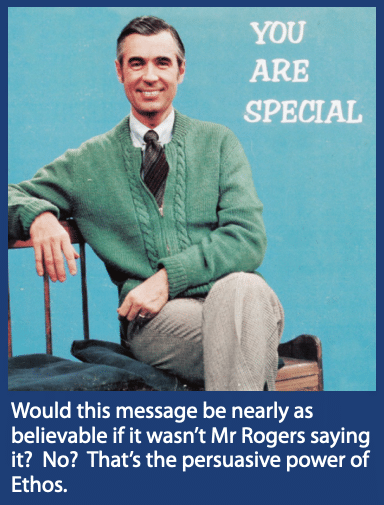 Their shortcut — everyone’s shortcut, actually — is to skip the education and go with the expert she feels the best about.
Their shortcut — everyone’s shortcut, actually — is to skip the education and go with the expert she feels the best about.
We swap judgement of character for domain specific expertise.
Or, at least the best customers do this, because they’re looking for an expert they can trust.
To whatever extent that you have “reasons why” in your ads, you want to subordinate them to the role of proving your passionate commitment to mission, rather than using them as primary persuasive messages.
2) People learn best from stories
Story is the primary tool we use to place information into an emotional context and to then internalize that now-relevant information into our worldview.
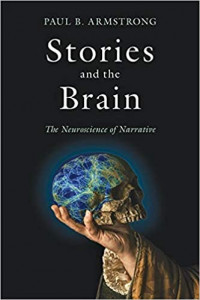 In other words, if you want people to care about the information you’re giving them…
In other words, if you want people to care about the information you’re giving them…
and if you want them to confidently act on that information…
you must present it to them in dramatized form.
To borrow an example from Chip and Dan Heath, I can tell you an urban myth — let’s say the one about a man in Vegas waking up in a frozen bathtub of ice, with a note pinned to him letting him know he’s missing an organ and needs to dial 911 immediately — and, after a single telling, you’ll have perfect recall of that story a month later.
In contrast, I could ask you about some bullet points on a presentation slide that you just saw and heard 30 seconds ago and you’ll likely have trouble recalling even one of them.
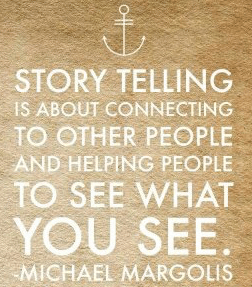 Story sticks. Copy points don’t.
Story sticks. Copy points don’t.
More importantly, story overcomes audience skepticism of advertised claims.
The only catch is you have to transport the audience into the story world. And that’s where amazing writing, Theatre of the Mind, and participatory messaging come into play.
When you combine this basic truth with the need to establish ethos, you get Genesis Stories.
3) People are primarily interested in things that affect them
Either your ad is intrinsically relevant to the audience, or it needs to be made relevant.
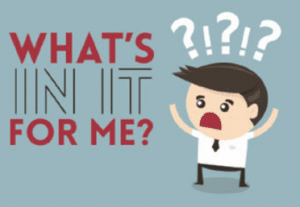 Irrelevant ads are automatically dismissed by the audience.
Irrelevant ads are automatically dismissed by the audience.
America has always sorted its mail over a trashcan, and now just as ruthlessly sorts, filters, and dismisses every other incoming stimuli. Modern life demands it.
Intrinsic interest comes from speaking about a compelling felt need the audience has right now.
If I’m hungry — i.e., in the market for what you sell right now — you don’t need to do a song and dance to get me interested in your tacos. I’m intrinsically interested, so you just have to make a compelling offer.
But if you’re advertising, say, jeans, and I don’t need a new pair or want a new pair of jeans, then you need to add extrinsic interest to make your ad relevant.
And that’s for jeans. It’s even more important for ugly duckling businesses like roofing, plumbing, or air conditioning.
There are two ways to add extrinsic interest:
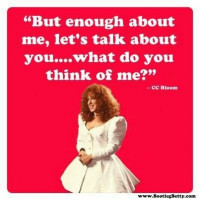 First, you can make the ad entertaining. I may not need jeans, but I’m always in need of fascinating diversion, and entertainment.
First, you can make the ad entertaining. I may not need jeans, but I’m always in need of fascinating diversion, and entertainment.
Second, you can transform the product into a reflection or expression of the buyer. I may not need jeans, but I always need a way to feel and signal that I’m youthful, independent, fit, and virile.
And these are two great tastes that taste great together. For an example of just such a combo, watch this Levis ad:
Yet it’s important to note the difference between “what interests the audience NOW vs. what will be of extreme interest to them at the moment they need what you sell.”
The goal of branding is to win the sale before it starts.
That means finding ways to communicate messages that WILL be relevant to customers when they DO need what you sell, while making that message interesting to them right now, as they encounter your ad.
If you entertain people only to give them an irrelevant message, they’ll remember your entertainment only to give their money to someone else at their moment of need.
4) Breaking patterns gets attention
Most of what you see, hear, and smell gets tagged by your subconscious as “expected” and therefore not worthy of conscious attention.
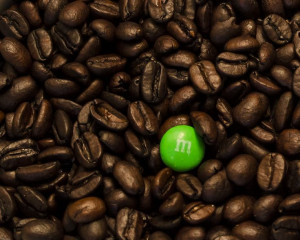 Your unconscious mind takes it all in and navigates most of life on autopilot while your conscious mind focuses on hopes, worries, expectations, etc.
Your unconscious mind takes it all in and navigates most of life on autopilot while your conscious mind focuses on hopes, worries, expectations, etc.
The stuff that gets flagged for attention is the stuff that’s NOT as expected.
In other words, if your ad sounds like an ad, it’ll get ignored.
You need to break the pattern of sounds they’re used to hearing — or the inanity of images they’re used to seeing — during a commercial break.

For example, the “yell and sell” approach might sound jarring when played on your laptop in a quiet office, but it’s background noise played within a commercial break of umpteen other yelling announcer-style ads.
In that instance, a quiet, confidential tone becomes jarringly pattern breaking.
Think of it this way: polite manners are meant to render you largely invisible, by constraining your behavior to the expected.
Break from those expectations and you’ll “make a scene.”
Making a scene may not be so great in your personal life, but it’s absolutely necessary for effective advertising.
With your ad budget you’ve bought yourself a stage.
Add in pattern-breaking ads and you’ll not only stand out but create a scene in which to dramatize your message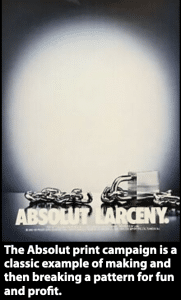 and demonstrate your ethos.
and demonstrate your ethos.
But without the pattern interrupt, your audience will just pass by your empty stage on auto-pilot, vaguely aware that there’s a charlie-brown-teacher like voice going “wah, wha, wha, wah…” in the background.
Note too that you can both break an already existing pattern to gain attention, and you can create a pattern with your advertising which you then break through variation.
“Breaking” a non-existent pattern generates revulsion rather than surprise. It seems random, and humans hate the truly random.
5) People believe stuff that fits their pre-existing mindset
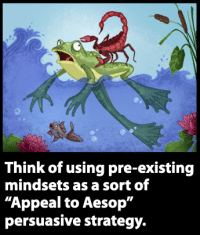 What does the audience already know and believe?
What does the audience already know and believe?
Both in general and also specifically about your industry and brand?
Because you have to start there.
You can’t ignore what they already believe in order to argue that they’ve got it all wrong.
“It’s not your father’s Oldsmobile” — there’s a reason that ad campaign was a spectacular failure.
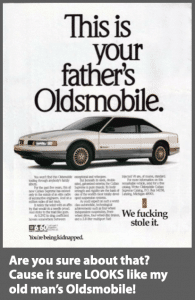 You can reframe what the audience thinks they know, but you can’t deny it outright.
You can reframe what the audience thinks they know, but you can’t deny it outright.
If you’re nervous, I can’t tell you that you’re calm and be believed. But I can reframe what you’re feeling as excitement.
A nice advertising example of this is Canadian Club’s “Damn right your dad drank it” ad campaign.
But you can’t reframe what you won’t first understand and acknowledge.
What do your customers already “know” about you and your brand?
Taking the idea of pre-existing mindsets a step further, stories make use of pre-existing archetypes and tropes for a reason.
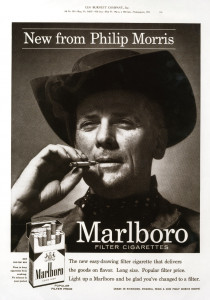 Mostly because archetypes conform to human experience and therefore are emotionally resonant for the audience.
Mostly because archetypes conform to human experience and therefore are emotionally resonant for the audience.
When Leo Burnett was tasked with re-branding Marlboro from a ladies cigarette into a man’s smoke, he worked with the archetypes for manly virility already present in the hearts and minds of American men.
He didn’t present a bookkeeper as the Marlboro Man. He used a frickin’ cowboy.
So what archetypes and tropes are you leveraging to make your story more believable and persuasive?
Until Next Week…
And that’s the first 5 of ten basic advertising truths.
Tune in next week for the rest of the list.
- Getting a Foot in the Door — Of Perception - November 27, 2025
- What Digital Superstars Know About Offline Advertising - November 17, 2025
- Unmistakable: A Tale of Two Boots and Branding Done Right - November 8, 2025
